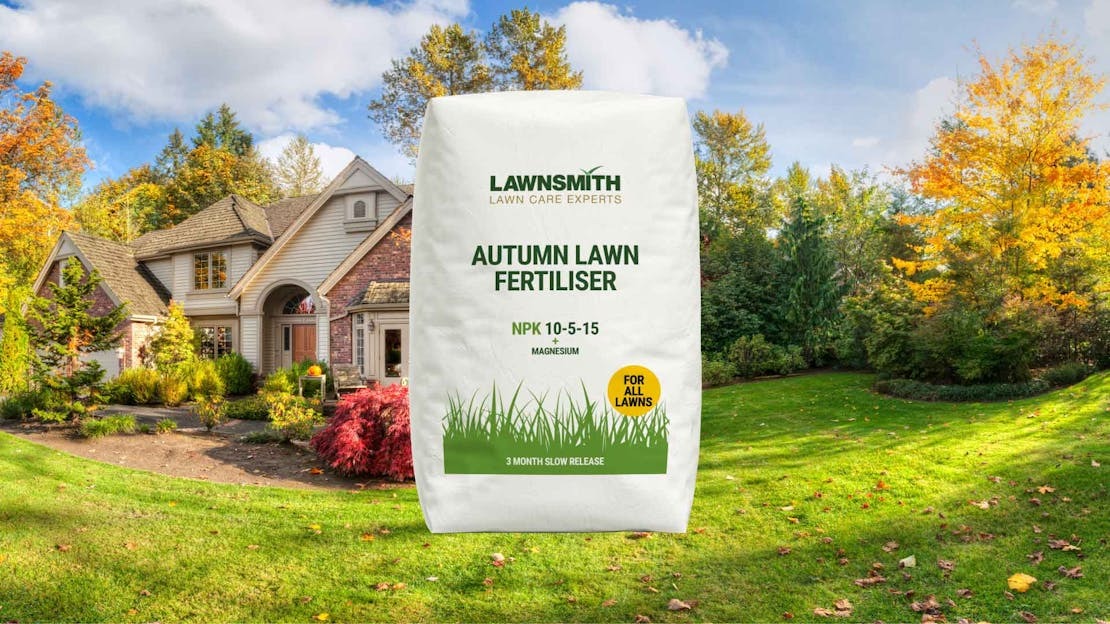
Best Lawn Food for Autumn
Autumn fertiliser needs to be able to support the grass nutritionally, give maximum colour to make use of lower autumn light levels and promote deeper roots.
In autumn our goals for fertilising are different to spring and summer. At this time of year growth is slowing and temperatures are dropping. This means the ability of the lawn to repair itself or fight off disease and fungal attack is reduced. Add to this the possibility of saturated ground from a wet winter or a layer of snow puts the grass under quite a lot of stress.
The Ideal Autumn Feed
To fulfill the requirements above your fertiliser needs to be able to support the grass nutritionally, give maximum colour to make use of lower autumn light levels and promote deeper roots.
What Should be in an Autumn Feed
Lower levels of nitrogen (N) than in previous seasons. Enough to enable it some leaf growth, however, in late autumn the ground may be warmer than the air temperature so growth will primarily be in the roots which is a good thing. Too much nitrogen and you have floppy weak grass prone to disease and you may well be mowing at Christmas!
A medium amount of phosphate (P) which really does get those roots going.
A good amount of potassium (K) which helps in overall health, disease resistance and controls moisture within the plant.
Finally some Magnesium (Mg) which increases the green colour and therefore aids photosynthesis helping the plant survive in shorter daylight hours. It also makes the lawn look so much greener as well.
Some autumn fertilisers contain iron which also greens the grass and helps in moss control. However, the amount in autumn fertiliser is generally not high enough to stop the moss and has a massive downside in that it stains hard surfaces.
Iron as an Autumn Additive
Iron, usually purchased as soluble iron, iron sulphate or ferrous sulphate is great for the lawn and moss control. It greens it up and hardens the grass helping to protect from winter extremes and disease. The best time to use iron is late autumn or early winter. Apply too early, perhaps with your autumn fertiliser and it will be gone before the hard times arrive!
It is best applied as a liquid by sprayer or watering can in autumn, and because it is sprayed it goes straight into the grass leaf where it can do the most good. You can control the strength from 1grams per m2 for greening to 5grams per m2 for moss killing. You can also completely control where it goes, right up to the lawn edge without staining paths, patios and decking.
There is no conflict between Green-up Ferrous Sulphate and Autumn fertiliser so both can be used at the same time if needed.
Can I use Liquid Fertiliser in Autumn?
One of the major benefits of spraying liquid feed on to the grass is the speed at which the grass reacts to it. The instant green effect of applying a mix with nitrogen and magnesium can be seen in a matter of hours. However, the effect only lasts a few weeks but gives you very good control over the grass enabling you to feed according to the demands of the grass and the weather conditions. However, in cooler weather grass plant growth is slowing, particularly above ground, so results of spraying fertiliser on to the leaves becomes very slow. Consequently it is always best to use granular fertiliser for main nutrients (NPK) in cooler weather.
When Should my Autumn Feed be Applied?
Firstly consider when you last fed the lawn as you don't want this feed to overlap too much. Once that criteria is out the way the best time to apply the feed is as the change from summer to autumn really takes hold. Too early and summer warmth will promote growth using up your fertiliser too early. Apply too late when it is really getting cold means you could be mowing at Christmas!
In a normal year, this means sometime in September for Scotland, late September and all of October for the North of England and the midlands with areas south of this being able to feed up to mid-November. Once you are in to the cooler months you then need a low nutrient cold weather winter feed such as our Winter Green.
If you are combining feeding with renovation tasks apply the feed as the last component or if over seeding apply once the seed has germinated.